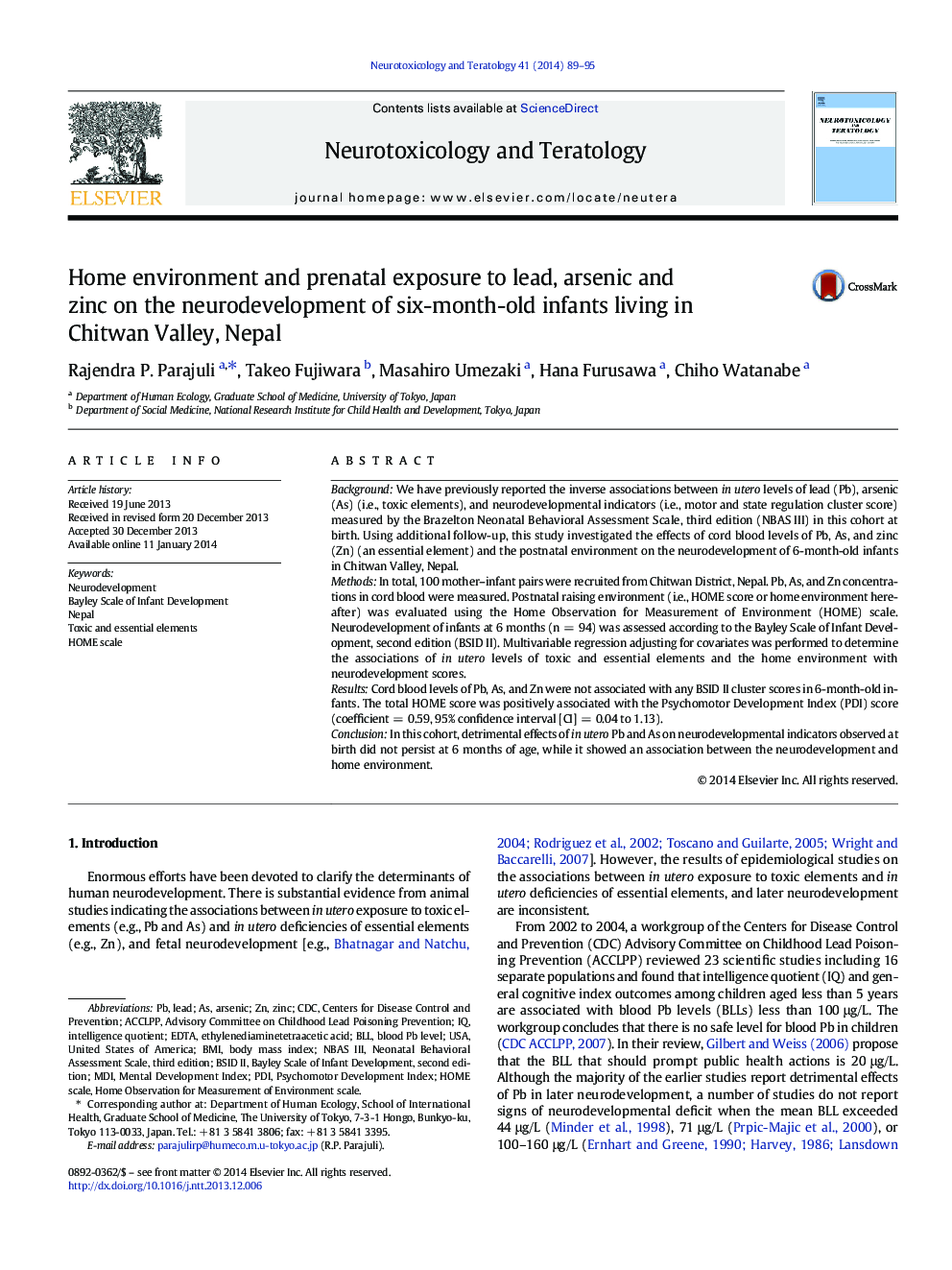| Article ID | Journal | Published Year | Pages | File Type |
|---|---|---|---|---|
| 2591052 | Neurotoxicology and Teratology | 2014 | 7 Pages |
•In this cohort, cord blood arsenic (As) level was lower than the reported level in Asia.•Cord blood lead (Pb) & zinc (Zn) levels were similar to the reported levels in Asia.•Cord blood Pb, As, & Zn levels were not associated with Bayley scores at 6 months.•Infants with relatively stimulating home environment exhibited better motor scores.•Association between motor score & home score remains persistent after adjustment.
BackgroundWe have previously reported the inverse associations between in utero levels of lead (Pb), arsenic (As) (i.e., toxic elements), and neurodevelopmental indicators (i.e., motor and state regulation cluster score) measured by the Brazelton Neonatal Behavioral Assessment Scale, third edition (NBAS III) in this cohort at birth. Using additional follow-up, this study investigated the effects of cord blood levels of Pb, As, and zinc (Zn) (an essential element) and the postnatal environment on the neurodevelopment of 6-month-old infants in Chitwan Valley, Nepal.MethodsIn total, 100 mother–infant pairs were recruited from Chitwan District, Nepal. Pb, As, and Zn concentrations in cord blood were measured. Postnatal raising environment (i.e., HOME score or home environment hereafter) was evaluated using the Home Observation for Measurement of Environment (HOME) scale. Neurodevelopment of infants at 6 months (n = 94) was assessed according to the Bayley Scale of Infant Development, second edition (BSID II). Multivariable regression adjusting for covariates was performed to determine the associations of in utero levels of toxic and essential elements and the home environment with neurodevelopment scores.ResultsCord blood levels of Pb, As, and Zn were not associated with any BSID II cluster scores in 6-month-old infants. The total HOME score was positively associated with the Psychomotor Development Index (PDI) score (coefficient = 0.59, 95% confidence interval [CI] = 0.04 to 1.13).ConclusionIn this cohort, detrimental effects of in utero Pb and As on neurodevelopmental indicators observed at birth did not persist at 6 months of age, while it showed an association between the neurodevelopment and home environment.
